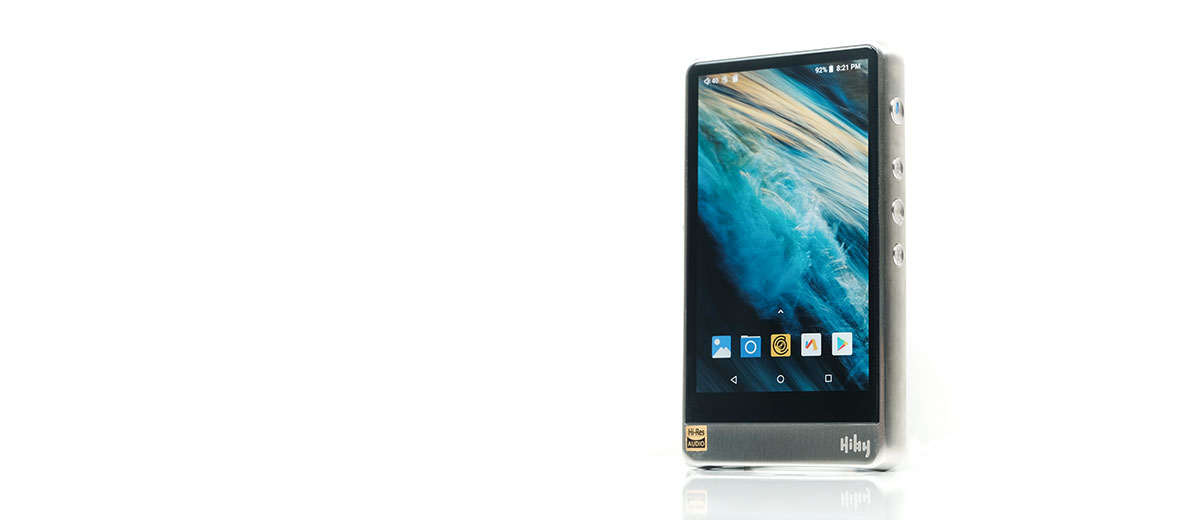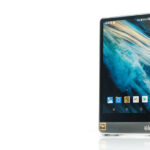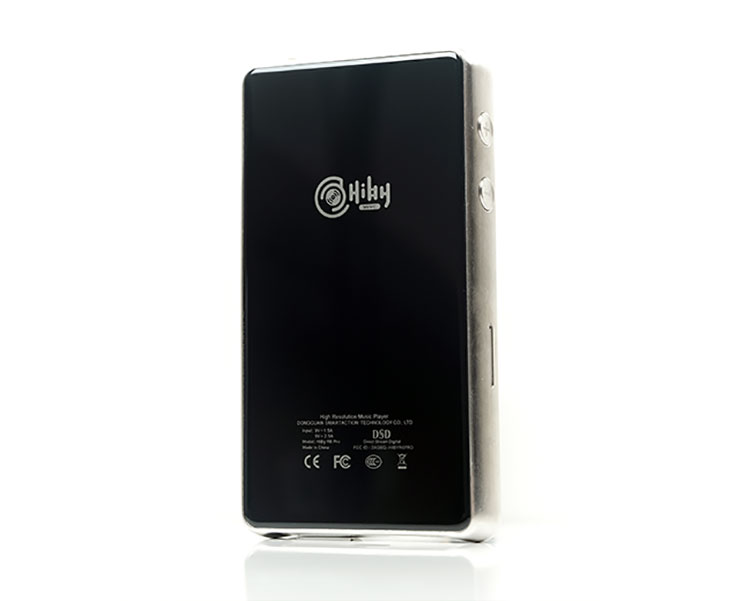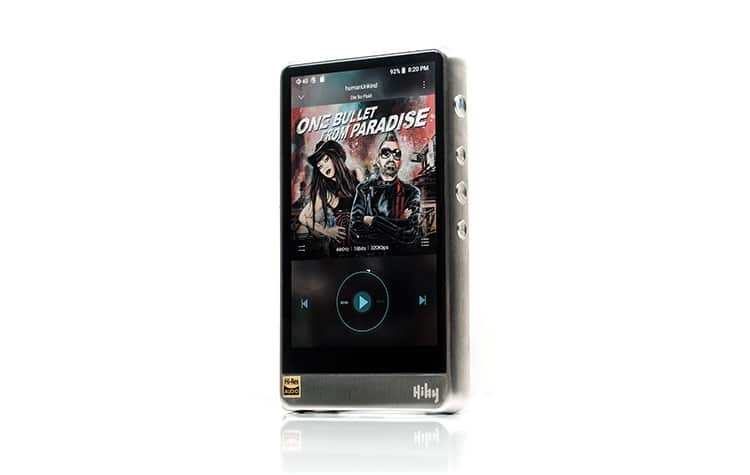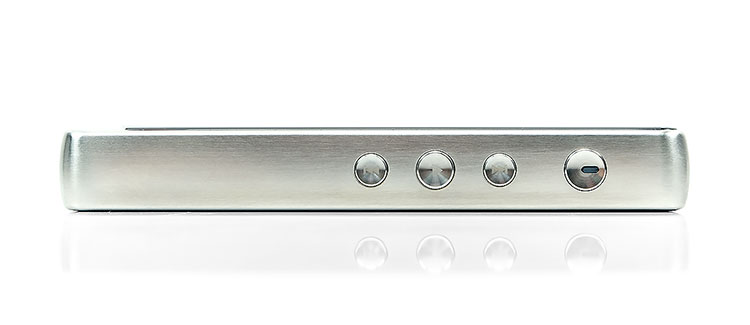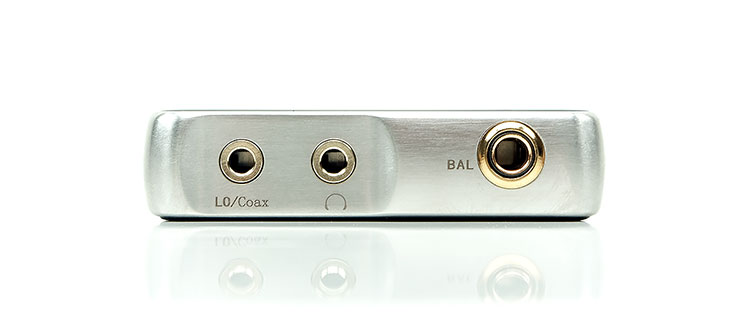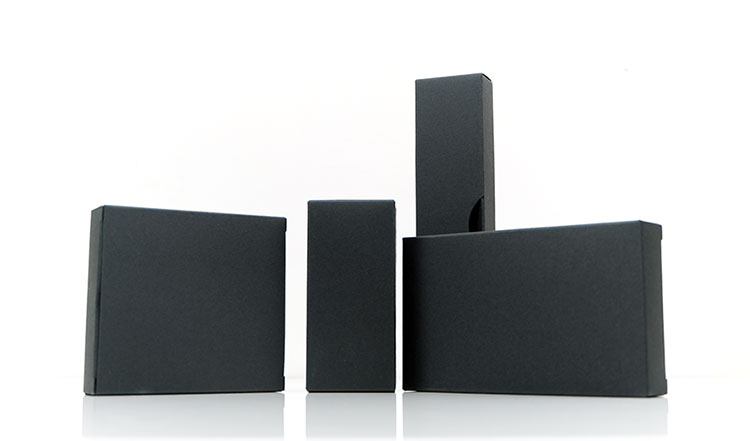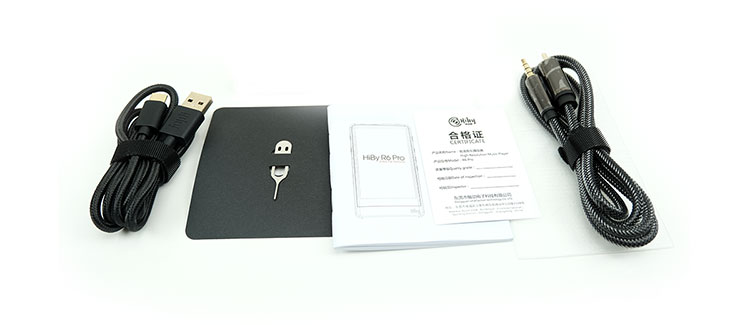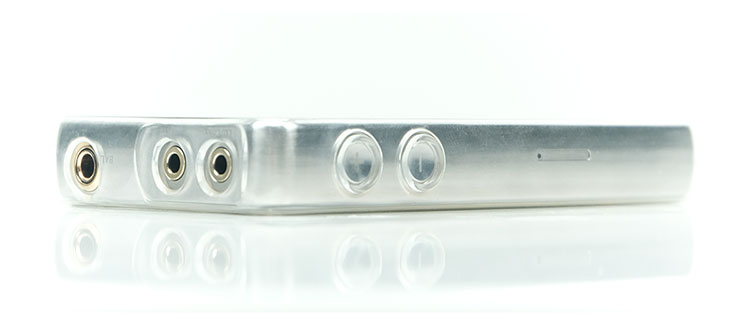This is a review of the new HiBy R6 Pro which is the next generation of the company’s original R6 flagship media player with enhanced low-impedance output power. It is priced at $799.
Disclaimer: This was a sample that was sent in exchange for our honest opinion. Headfonics is an independent website with no affiliate links or status. We thank HiBy Music for this opportunity.
To learn more about HiBy products that have been previously featured on Headfonics you can click here.
Note, that this article follows our latest scoring guidelines which you can read up on here.
It was entirely coincidental that I met HiBy Music at the Guangzhou Audio show in November 2017. I needed some R’n’R after visiting some factories and decided to wander upstairs where the HiBy booth was located.
They were showing the original R6 stainless-steel ‘Domestic edition’ for the first time and wanted me to guess the price and demo it. I guessed $800, my bad, it was $599 and now $499 direct from their online store.
Since then the R6 grabbed a 2017 DAP award from us and made a hell of a lot of social noise from buyers and the general portable audio community. It was largely a success as a freshman digital media player with some killer features.
Roll-on 2019 and now we have the new R6 Pro DAP priced at $799 (was that my fault?). Why did this come out if the R6 was such a success?
Well, technology never stands still, Android is up from 6 to 8 with LDAC and more than a few of us want that high output impedance lowered. HiBy responded but I can tell you now the R6 Pro is not just a feedback fix, there is more to it than that.
What’s New?
Quite a few things actually though the basic form factor and platform remain the same on a macro level.
New Amp stage
The first is the output impedance on both its 2.5mm balanced and 3.5mm unbalanced jacks. This was a polarizing topic the minute the 10Ω spec sheet was released for the original R6.
Low impedance IEMs would have to be jacked via an iFi IEMatch cable (an accidental hero, much to iFi’s delight I am sure) to prevent what we call low-z skew. This is basically where the frequency tuning takes a turn away from what you expect, such as a darker tone or less bass. It seemed to have an effect on very sensitive IEMs, particularly BA designs.
The R6 Pro remedies this with a complete amp stage overhaul. Out goes the TI dual TPA6120A and OPA1612 amp stage and in comes four Muses8920 and an SSM6322 from Analog Devices.
Not only will this reduce the impedance level to less than 0.5Ω for both balanced and unbalanced to match better with sensitive IEMs but will also change the tonal balance and maximum power output rating. In short, the R6 Pro output is more stable and much more powerful than the older R6.
Output configuration
The final part of the amp stage overhaul is the jack configuration. Out goes the older 2.5mm balanced jack output and in comes the more modern Japanese NIPPON DICS 4.4mm pentaconn balanced format to match the likes of iBasso, FiiO, Cayin, and of course Sony.
Oreo
The second change is the software platform, moving from Android 6 to Android 8, or Oreo. Why is this important? Quite apart from the “keeping up with the Jones’s” element in 2019 it also brings in a few new features as well as allowing HiBy to retain their bit-perfect DTA Architecture.
The key new feature for me is the ability to transmit BT LDAC (and HWA) out of the box which Android 6 did not offer. Ironically, this brings the stock R6 Pro up to par with their junior R3 which is also now LDAC capable.
Legacy Features
They would be mad to ditch the ‘baby with the bathwater’ in terms of what people loved about the R6. Thankfully HiBy thinks the same way.
So that means the same 3GB RAM and fast Snapdragon 425 SoC experience. The lovely 2.5D Glass small bezel IPS screen and the stainless-steel body (no aluminum at the time of writing) stay. It also means a return of the ESS ES9028Q2M dual DAC implementation and the brilliant MSEB DSP software.
Build Quality
Design
This is almost the same stainless-steel design as the R6. For those new to the R6 Pro, this means a corrosion-resistant 316L stainless-steel block with some beautiful CNC curving. This is a “pointy” sharp-edged free design and feels a ‘smooth as butter’ in your hand.
I had remarked in the original review that HiBy had some Sony design cues in the R6 and I guess it is the same for the R6 Pro. However, the 4.4mm area lacks that contouring on the other 3 sides so not quite as symmetrical as the first R6. In all, a slightly traditional rectangular shape with concaved accents on top and bottom to protect all but the 4.4mm socket.
Side by side there are some slight changes to the dimensions to accommodate the larger 4.4mm jack output in part at the top and a slightly longer housing below the base of the LCD screen.
The USB-C socket at the base of the new R6 Pro is also a little more centered than the original R6. Apart from that the button configuration on both sides and the memory card slot remain unchanged in both form and function.
Dimensions
We have added the dimensions and weight to our ever-growing DAP table below. As you can see it does differ slightly from the original R6 being slightly longer and just fractionally wider and deeper. It also carries an additional 10g in weight.
[table id=13 /]
On day-to-day handling. however, it is unlikely you would ever notice those additional mm’s over the original, and even optional accessories such as the nice blue leather case for the original R6 fit the R6 Pro quite well without covering the buttons. This is still a very compact single-hand-friendly digital media player.
However, there is no word of an aluminum version as of the time of writing so that 285g weight is fairly chunky compared to competing DAPs at this price point. I like chunky, call me old school but you may not be so inclined.
Screen
The R6 Pro retains the same screen as the original R6 which is a good thing in my book. This is a capacitive 4.2″ IPS TFT screen with a 350dpi 16m color 1280 x 768 px resolution.
This is a bigger and better-performing LCD screen than the X7ii. The X7ii lags behind with a smaller 3.7″ IPS TFT screen with just a 233dpi and 800×480 px resolution. The R6 Pro is on par with the DX200 and DX150 which both use a 4.2″ IPS 1280 x 768 px touchscreen.
The viewing angle on the R6 Pro is fantastic. The screen is legible from a virtually horizontal position. The color saturation is gorgeous and seems to have superior backlighting to both the iBasso DX models. The touch response is still snappier than either of those DAPs. This is 2019 and this is still the best touchscreen I have used on a DAP to date.
Bordering
I had a real hard look up and down both the R6 and R6 Pro and the bezel dimensions look pretty much the same to me. That means a really small bezel, perhaps the smallest on the market for the size of that screen.
It goes very close to a highly desirable borderless aesthetic that we look for on laptops and modern smartphone designs. There is just a slight additional bezel thickness at the bottom with an SS finish to accommodate the amp.
2.5D Glass
The R6 Pro also retains the layer of 2-D glass over the LCD from the original R6. If you look closely at the screen design you will notice a smooth curvature on the edge of the glass display known as a contoured edge. Basically, this bucks the old school design of a slightly raised bezel design with the glass sitting on top of the body creating a more seamless edge.
This is quite a high-profile design edge used now by a number of smartphone manufacturers such as Google and even Apple. Samsung’s curved glass is technically “3D” glass because of its bendable substrates and electronics whereas the R6 Pro screen has none of that.
Controls
As with most modern DAPs these days the R6 Pro can be controlled in 3 different ways; touch, physical and remote.
Touch
The touch experience of the R6 Pro is excellent, aided by that fast Snapdragon processor and 3Gb of RAM. The feeling is more in line with a decent smartphone experience than a traditional DAP.
There is virtually no lag between executing a touch command and the DAP responding to it. Everything feels snappy including the obligatory pinch and zoom multi-touch features where applicable.
Aside from that, the Touchscreen will do everything you need the R6 Pro to do outside of initiating volume control, power on/off, and LCD on/off. You can however increase or decrease volume control via the touchscreen once initiated via the physical dial.
Unlike the PAW Gold Touch, you cannot double-tap from the screen-off option so you have to do that one via the power button to the right side.
Physical
There is no change from the original R6 with regards to the R6 Pro physical button configuration and positioning. To the left and right you get both digital volume and playback controls. The buttons are fairly flush to concave against the SS panels but are spaced widely enough for you to be able to work with them without having to look down all the time.
On the left side are the volume controls although with Android a combination of power and lower volume will allow you to do screenshots. The buttons are easy to manage and fairly responsive in terms of potential lag between action and screen response.
On the right side, you have a slightly larger power button at the top which also doubles up as an LCD screen ‘off and on’ button. The button also holds a nifty little blue LED light which acts as a power-on indicator. The LED will glow blue during regular use but switch to red when the battery life is low and stay in red during charging until it is complete where it returns to blue.
Below the power button, you have three slightly smaller buttons, similar in form factor. They are your primary playback control buttons and will operate with the screen on or off.
Wireless
The final way is via the R6 Pro’s in-app HiByLink service. This is only available if you have both the Android HiBy Music app on the R6 Pro and your smartphone.
By setting up the R6 Pro as a HiByLink Server and the Smartphone as a HiByLink client you can effectively control the R6 Pro remotely (Bluetooth connection is automatically done during the setup process). This is ideal for those who have their hands constantly on their smartphones but want to control the R6 Pro from a short distance on their desk or in their pocket if on the go.
During this setup, you can browse the R6 Pro’s media library, operate playback controls, adjust volume, and scan for media. You cannot operate the R6 settings or its DSP/EQ functionality.
Inputs & Outputs
The inputs and outputs of the R6 Pro get one important change and that’s the move from a 2.5mm balanced port to a 4.4mm pentaconn compatible port. The 3.5mm and line-out/coaxial ports remain unchanged from the R6.
I am not as rabid regarding the benefits of 4.4mm over others since it is a fairly hefty and not a very discreet connector. However, I do recognize its better durability and it does bring the R6 Pro up to par with what is happening in the rest of the audio community.
This keeps it competitive and compatible with the increasingly saturated 4.4mm cable market and adapters being used by everyone, including me.
As mentioned at the start there are some design changes to theR6 Pro to accommodate the new connector as well as the properly centered USB-C connector at the bottom. The USB-C connection will provide for USB-DAC out functionality with PC/Macs, charging and data transfer, as well as any OTG services you wish to use.
Memory
The R6 Pro has no change in its 32GB onboard memory and micro SD card slot capacity up to a 512GB official rating. It still uses a single pin-push micro SD tray slot on the left panel. Is 32Gb a bit light for a $799 device? Maybe 64GB to match the DX200 would be ideal though you have to consider the DX200 is 1GB less RAM so give and take in the Bill of Materials here is possible (BOM).
Like before the official rating could push beyond the 512GB right up to the new 1TB cards and beyond. This is not a hard ceiling in terms of memory capacity. Personally, I cannot test that, I tend to keep it 64GB size only. I tend to find the lifespan of micro SD cards to vary and 64Gb is a more acceptable loss than 500GB if they decide to die.
Battery Life
HiBy has retained the same 4000mAh Li-polymer battery from the original R6. There are pros and cons in this movie with the R6 Pro battery life.
Given there is an additional level of output power from the R6 Pros new amp stage and the higher decoding rates from LDAC and HWA I am not convinced the 12 hours rated battery life is obtainable under normal ‘audiophile’ playing conditions. It may be possible with the screen off using a lossy format with no button mashing.
However, I never really got 12 hours from the R6 either. Closer to 10 hours would be normal with no WiFi or Bluetooth. With the R6 Pro and a heavy-duty headphone combined with WiFi or LDAC BT, it drops to sub-10 hours and possibly further on DSD or Hi-res. Your mileage may vary on this one depending on how you like to use the R6 Pro.
Charging
HiBy has improved the initial charging capability of the R6 Pro over the original R6. Not that the old R6 was a slouch, to begin with. With its quick charge system, the R6 was a quick 70 mins to 70% and 140 mins to 100% using the Qualcomm quick charge system on a 9V/1.5A connection.
Now here comes the R6 Pro promising to do the first 70% in an hour or 10 minutes faster but a full 100% in 150 minutes or 10 minutes slower. A small change for the impatient ones among us. I have charged it more than a few times now from 3% and it shots up really fast on a USB 3.0 connection from my laptop so it is quite impressive.
Accessories & Packaging
There are some slight changes to the packaging, well at least to the packaging I received in Nov 2017. The box is a little bit wider than the original R6 and the rear has a bit more information about the R6 Pro, all in English. The accessories are all in their neat little individual boxes as opposed to being just bagged and tagged in the original narrower box.
Accessories
The accessory line-up in the R6 Pro looks much the same to me as the original R6 but with a few qualitative changes on the finishing of some of the accessories. You get a memory card pin, tempered glass front and back, a silicone case, a USB-C cable for charging and data transfer as well as a coaxial cable. You also get a warranty card and user manual in English.
The screen protectors are tempered glass as opposed to plain matte films which is a nice upgrade. I do think they are a touch too narrow when applied. I understand the 2.5D glass makes tempered tricky on the sides but they are narrower than the one on my R6 original and some of the glass on the front is still exposed.
The original R6 Chinese edition USB cable was a plainer rubber tubed black version which seemed a little out of place beside the supplied fancy nylon jacketed coaxial cable. Now the R6 Pro USB-C cable is the same nice finish as the supplied coaxial cable with both using nylon or a cloth-based jacket.
Case
The supplied silicone case is now completely translucent and a bit stiffer than the older charcoal finished rubbery R6 version. It does feel like it will offer a bit more protection than the original rubbery version and the translucent finish gives it more of a low-profile feel. You see less silicone case and more DAP in short.
That being said, I would much prefer to have seen a leather case in the box to complete the look. Silicone is a little underwhelming at this price point when the DX200/DX150 come with nice cases at $499 and $829.
I am pleased to say though that if you bought one of the nice custom leather cases as an upgrade for the original R6 then that same leather case will fit just fine on the new R6 Pro. It is not millimeter perfect mind you as the R6 Pro dimensions are just slightly taller meaning the buttons are a little closer to the edges. However, it is still 100% functional, so go ahead and buy with confidence.
Click On Page 2 below for Hardware & Software Impressions

